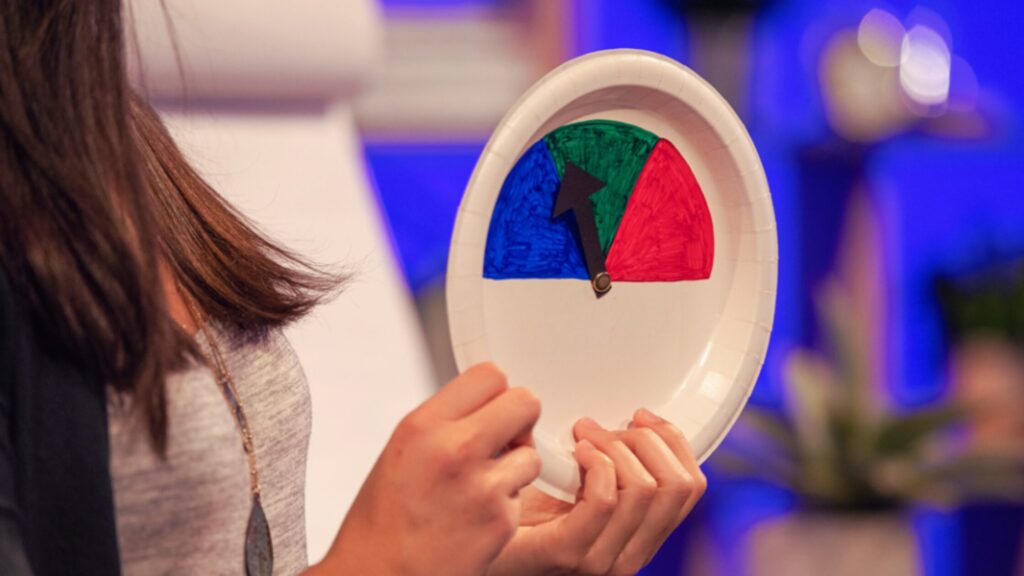As a parent, you might often feel overwhelmed by your child’s intense emotions. A crucial step in addressing this is helping your children understand what is happening in their bodies during these moments and how they can be proactive with identifying emotions before they get out of hand.
The “engine plate” is an excellent tool for teaching this concept.
Identifying Emotions with the Engine Plate
An engine plate is a physical tool that you and your child can create together to help them identify their emotions and explore how these emotions feel in their bodies. It’s beneficial for you as a parent to make an engine plate for yourself as well, since modeling is the most effective way to teach.
How to Create an Engine Plate
Gather the following materials:
- Black construction paper
- White paper plates
- Coloring markers
- Brass fasteners
- Ruler
Then:
- Divide the Plate: Use the ruler to divide the paper plate into three sections.
- Color the Sections: Fill one section with red, another with blue, and the last with green.
- Create an Arrow: Cut out an arrow from the black construction paper and use the fastener to attach it to the center of the plate.
How to Use the Engine Plate
Choose a time when your children are calm, well-rested, and fed to explain how the engine plate works. Tell them that their bodies function like the engine of a car or train, and each color on the plate represents different emotions or states what their bodies might experience.
Red Section:
- Feeling hyper, with excess energy
- Experiencing anger with tight muscles
- Feeling upset because of hunger
- Cranky from tiredness
- Feeling scared, especially if they have a heightened fear response
- Excited to the point of stress
Green Section:
- Feeling just right—calm, relaxed, and ready to learn
- Muscles are loose and relaxed
- Feeling happy and content
Blue Section:
- Feeling tired
- Feeling bored
- Experiencing loneliness, sadness, or worry
- Feeling weak from hunger or thirst
Every Color Has a Purpose
After explaining what each color means, teach your children strategies to use when they notice their engine is running on red or blue, helping them get back to green. The goal is to empower them to move between these states throughout the day successfully by identifying their emotions — without feeling shame for where they are.
The key thing to note with engine plates is that red and blue are not “bad”, and green is not “good.” Every color has a purpose, and we need to be able to move through all three depending on the circumstances.
Keep the engine plates in a common area of your home, like the kitchen, placing them somewhere easily accessible, like the fridge. Regularly referring to these plates in daily conversations will help your child notice their internal state and learn to cope with skills to return to a calm, focused, and ready-to-learn state.
Key Takeaway
An engine plate is a physical tool that helps your children identify their emotions and explore how they feel in their bodies. Remember, red and blue are not “bad”, and green is not “good.” Every color has a purpose. We need to be able to move through all three depending on the circumstances.
A hot-tempered person starts fights; a cool-tempered person stops them. ~Proverbs 15:18
Application
Looking for a fun way to teach your kids the skills to return to the green state of their engine plates?
Name the Most is a game that turns your car rides into an opportunity to have meaningful conversations with your kids about their feelings. It also encourages them to take those feelings to God when they need help getting their emotions under control.
Access Name the Most now in the Everyday Moments™ activity collection.





